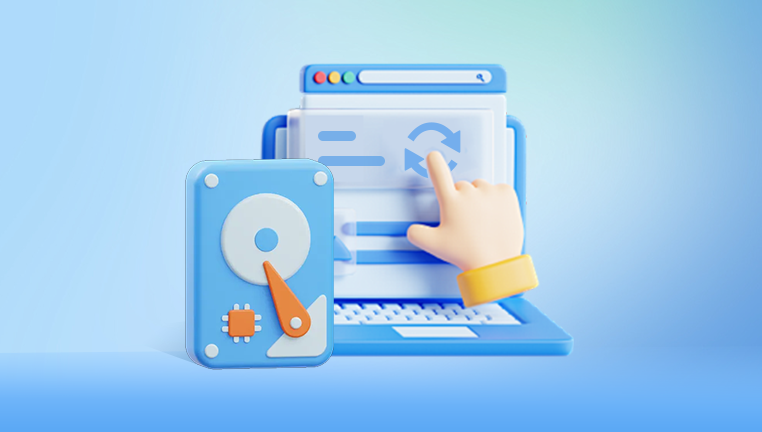Hard drives are delicate pieces of technology. While they are designed to endure everyday use, dropping them can cause severe damage. Whether it’s a small bump or a significant drop, the impact can compromise the drive’s functionality, potentially leading to data loss.
Before delving into solutions, it’s essential to understand how hard drives work. Hard drives consist of several critical components:
Platters: These are the circular disks inside the drive where data is stored magnetically.
Read/Write Heads: These components move across the platters to read or write data.
Spindle: The spindle holds and spins the platters.
Actuator Arm: This arm moves the read/write heads across the platters.
Drive Controller: This electronic component manages data transfer between the drive and the computer.
A drop can disrupt any of these components, resulting in data loss or drive failure.

Initial Steps After Dropping the Hard Drive
Avoid Further Use: If you suspect that the hard drive has been damaged, refrain from using it. Continued use can exacerbate the problem, potentially making data recovery more difficult or impossible.
Inspect the Drive: Look for visible signs of damage. Check for cracks, dents, or dislodged components. However, keep in mind that not all damage is visible.
Listen for Unusual Sounds: If you connect the drive and hear clicking, grinding, or beeping noises, it’s a sign of internal damage. These sounds often indicate that the read/write heads may be malfunctioning or that the platters are scratched.
Check Connections: Ensure that the cables and ports are working correctly. Sometimes, the issue might be with the connection rather than the drive itself.
Diagnosing the Problem
Try Connecting to Different Ports or Computers: This can help determine if the issue is related to the drive or the computer’s hardware.
Run Diagnostic Tools: Some software tools can scan the drive for errors. While these tools can provide useful information, they may not be able to recover data if the drive is physically damaged.
Check the Drive’s Power Supply: Ensure that the drive is getting sufficient power. Sometimes, power issues can be mistaken for drive failures.
Data Recovery Options
If your hard drive is not working correctly after a drop, there are several data recovery options:
Software Recovery: Data recovery software can help recover files from damaged drives. This is more effective if the drive is still spinning and accessible but experiencing logical issues rather than physical damage. Popular software options include:
EaseUS Data Recovery Wizard
Recuva
Disk Drill
R-Studio
Follow the software’s instructions carefully to avoid further damage.
Professional Data Recovery Services: If the drive has suffered physical damage, it’s best to consult with a professional data recovery service. These experts have specialized equipment and cleanroom environments to handle severe cases. Look for services with:
Certified Technicians: Ensure that the service employs certified professionals with experience in handling dropped drives.
Success Rates: Research the company’s track record for recovering data from damaged drives.
Transparent Pricing: Beware of services that charge exorbitant fees without clear pricing structures.
Examples of reputable data recovery services include:
DriveSavers
Ontrack
Secure Data Recovery
DIY Recovery Kits: Some companies offer DIY recovery kits for hard drives. These kits include tools and instructions for disassembling the drive and attempting to recover data. However, this method is risky and can lead to further damage if not done correctly.
Preventive Measures and Future Precautions
Use Protective Cases: Invest in a rugged, shock-resistant external case for your hard drive. This can help absorb impacts and prevent damage from accidental drops.
Regular Backups: Regularly back up important data to multiple locations. Consider using cloud storage or other backup solutions to safeguard against data loss.
Handle with Care: Always handle hard drives gently. Avoid moving or jostling them while they are in use, and store them in a safe, stable location.
A dropped hard drive can be a stressful experience, but understanding the mechanics of the drive, diagnosing the issue, and knowing your data recovery options can help mitigate the damage. Whether you opt for software recovery, professional services, or a DIY approach, the key is to act quickly and carefully to maximize your chances of data recovery.
About us and this blog
Panda Assistant is built on the latest data recovery algorithms, ensuring that no file is too damaged, too lost, or too corrupted to be recovered.
Request a free quote
We believe that data recovery shouldn’t be a daunting task. That’s why we’ve designed Panda Assistant to be as easy to use as it is powerful. With a few clicks, you can initiate a scan, preview recoverable files, and restore your data all within a matter of minutes.
Subscribe to our newsletter!
More from our blog
See all postsRecent Posts
- Recovery ssd upgrade failed exagrid error 2025-04-03
- Smart hard disk error 301 2025-04-03
- Error code 36 external hard drive 2025-04-03










